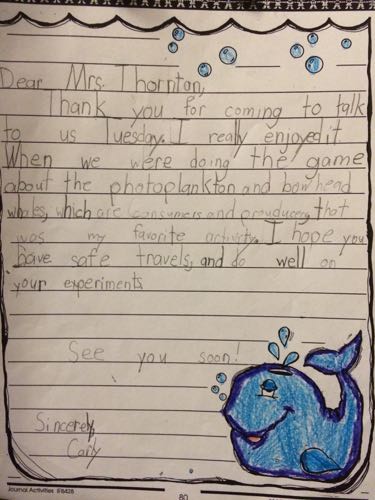The best part of being a teacher is getting to share exciting new things with students, and PolarTREC has given me a new avenue through which to share my love of science. I have been visiting classrooms with my "Polar Science Box", and I have found that students are excited to learn about the Arctic. We have tested the very popular "blubber glove", explored albedo of ice versus water and other materials, and investigated producers and consumers of the Arctic food web. A common question I get is "Why should we care about the Arctic? It is so far away from the Chesapeake Bay." I hope the activities I share with students help them to see our global connectedness. The Arctic may be thousands of miles away, but currents travel throughout the world's oceans, animals migrate, and harvests taken from Earth's waters are an important source of food as well as a huge economic benefit. Many families in my community rely on the income from clam, fish, and crab harvests. If our local waters become too warm, too acidic, or too dirty to support this industry, then our community will feel the effects. Although the polar bear is often used as a global symbol of the negative effects of climate change, it is easy to use a symbol relevant to your own community. There are no polar bears in the Chesapeake Bay, but there are many other organisms that are susceptible to the effects of climate change. We should care about the Arctic because it is a mirror of our own environmental backyard.
 Students use blubber gloves to learn why blubber is important to Arctic animals.
Students use blubber gloves to learn why blubber is important to Arctic animals.
 Students of all ages like testing the blubber gloves.
Students of all ages like testing the blubber gloves.
 Students are excited to learn about Arctic science.
Students are excited to learn about Arctic science.
 Students are excited to learn about Arctic science.
Students are excited to learn about Arctic science.
Question of the Day
What symbol would you use to raise awareness of climate change in your community?

